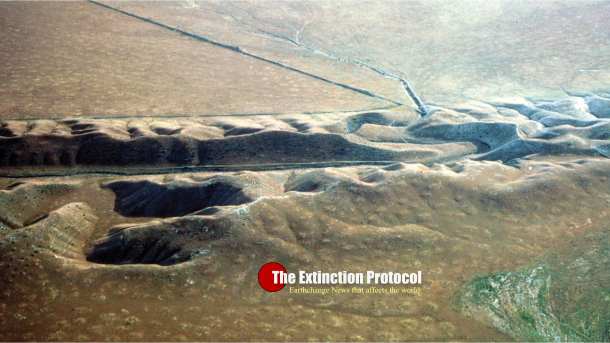
June 2016 – CALIFORNIA – For
the first time, scientists have produced a computer image showing huge
sections of California rising and sinking around the San Andreas Fault.
The vertical movement is the result of seismic strain that will be
ultimately released in a large earthquake. The San Andreas Fault is
California’s longest earthquake fault, and one of the state’s most
dangerous. Scientists have long expected that parts of California are
rising — and other parts sinking — around the fault in a way that is
ongoing, very subtle and extremely slow.
Such vertical movement makes a lot of
sense. California sits on the border of two gigantic tectonic plates —
the Pacific and North American — that are constantly grinding past each
other. But actually observing how California’s landscape is rising and
falling from seismic strain has been an elusive goal, until now. In a
study published in the journal Nature Geoscience on Monday, scientists
found that much of the Los Angeles Basin, Orange County, San Diego
County and the Bakersfield area are sinking 2 to 3 millimeters a year — a
couple of penny-widths annually. By contrast, Santa Barbara and San
Luis Obispo counties, and a large portion of San Bernardino County, are
rising at the same rate.
The areas closest to the San Andreas
fault, however, remain locked in place. When the next big earthquake
strikes, the different parts of Southern California will lurch back to
the same level. “Once there is a major event, all of that energy gets
released,” said Sam Howell, a doctoral candidate in geophysics at the
University of Hawaii at Manoa and the lead author of the report. The
region of the San Andreas fault between Monterey County and Imperial
County hasn’t moved in a significant way in more than 150 years, and
other parts of the fault have been accumulating stress for more than 300
years.
The last big earthquake on the southern
San Andreas fault, a magnitude 7.9 temblor, ruptured from Monterey
County through Los Angeles County in 1857. Further south, the section of
the San Andreas between San Bernardino County and Imperial County
hasn’t ruptured in a major way since about 1690. Howell said the time
span for a large rupture on the southern San Andreas is, on average,
once every 150 years or so. But the actual interval can vary over the
centuries, and that’s why it’s hard to say exactly when the next big one
will hit.
Howell said a better understanding of
how California is being warped as a result of this accumulating seismic
strain is helping scientists “understand more about how the fault is
behaving and the effect it’s going to have in the surrounding region.”
The study, however, isn’t expected to help scientists suddenly predict
the precise time and location of the next devastating quake. “It’s
pretty much impossible to say when the next one will happen,” Howell
said. –LA Times

Nessun commento:
Posta un commento